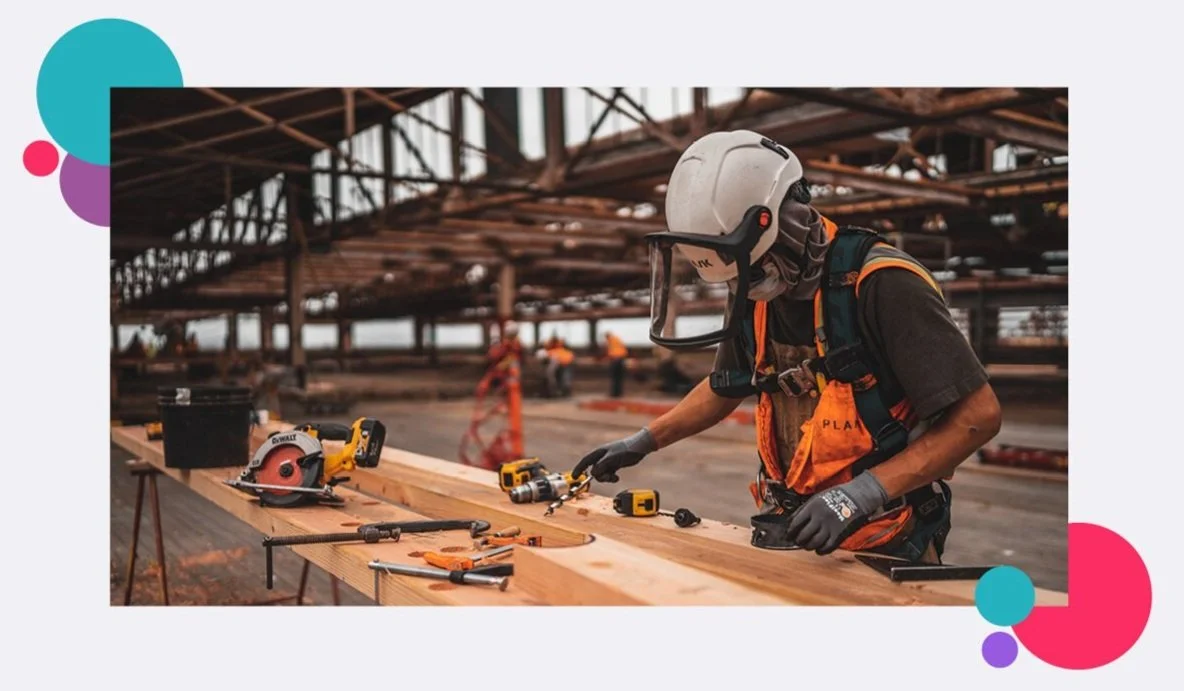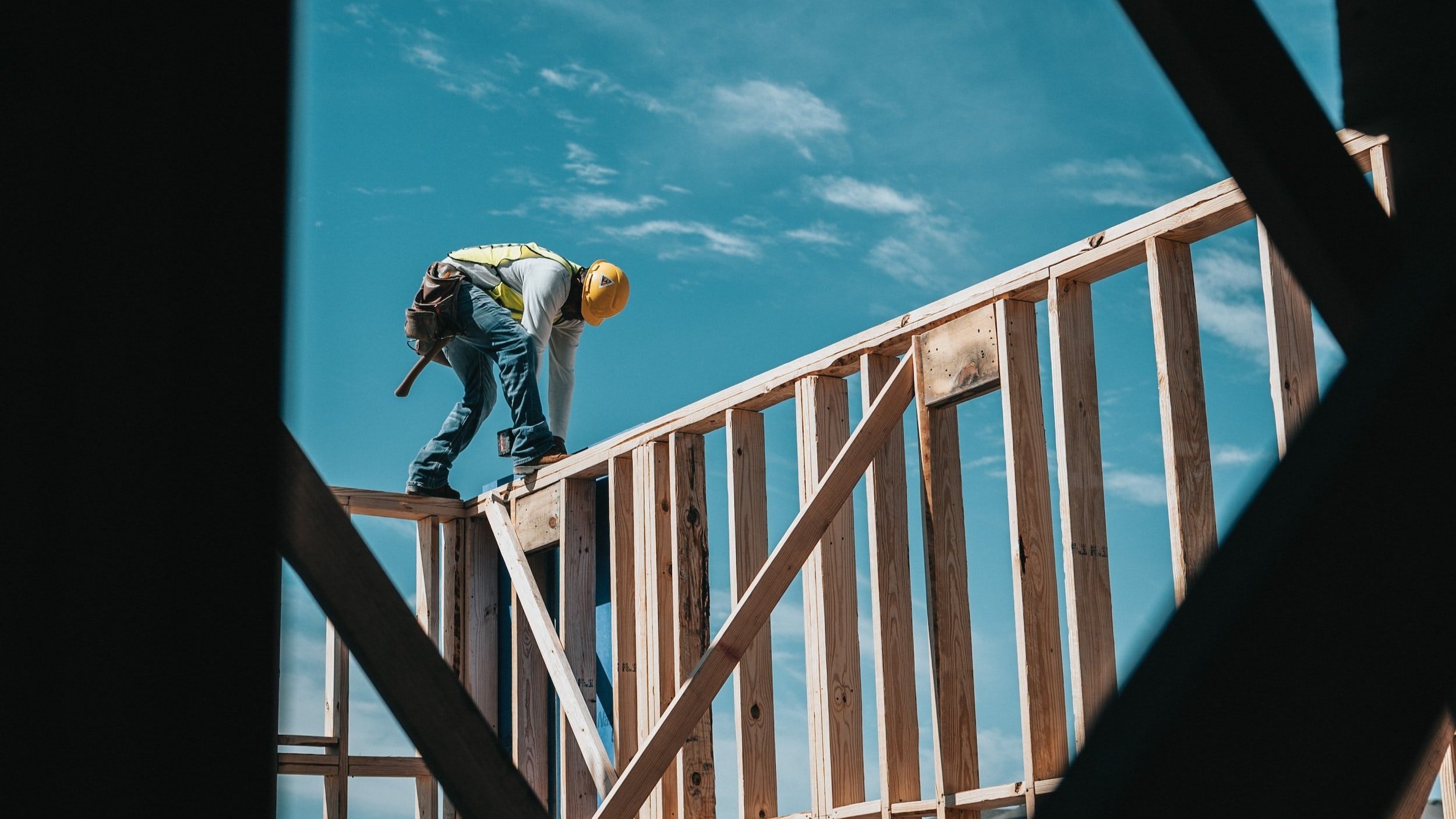Lone working in construction
An introduction to lone working in the construction sector
The UK’s construction industry accounts for £110 billion of annual output and around 10% of all employment (according to a 2022 report) –that’s around 3 million people!
This industry employs all sorts of workers, from more hands-on roles such as plumbers, electricians, joiners and bricklayers, to managerial roles like engineers, technicians and analysts. Of course, there are also a vast amount of people who work in more administrative roles and who, therefore, will normally be at lower risk.
With such a high employment rate –and with such involved, manual work– it is perhaps no surprise that the industry sees 78,000 cases of work-related ill health each year and an average of 36 deaths. And, while the rates of ill health are largely the same as the all-industry average, the rates of specific injuries such as musculoskeletal disorders are significantly higher.
Most important for this article is how lone working –the act of working alone or without direct supervision– can make these risks worse. We will look at these risks and discuss how construction organisations can protect their lone workers.
What is lone working and how does it affect construction?
A lone worker is someone who works out of sight or earshot of their colleagues for some or all of their day. Lone working, by its nature, can increase the risk of serious injury, by lowering levels of oversight and increasing response times to potential emergencies.
Risks in the construction industry
Working in the construction industry can come with many risks. Some of the most common include:
Slips, trips and falls
Injuries from manual handling, lifting or carrying
falls from a height
Struck by a moving/falling object
These types of risk are common among all industries (apart from ‘falling from a height’, which is much more likely in construction).
What sets construction apart, however, are the rates of injury. Worryingly, you are almost twice as likely to have a ‘serious’ injury in construction than in the average industry.
Sadder still are the rates of fatal incidents in the industry. You are roughly four times more likely to die working in the construction industry than in the average industry.
It should also be noted that, as well as one-off, accidental injuries, the construction industry suffers from various long-term ill-health problems. One example is hand-arm vibration syndrome (HAVS) –which is caused by the continuous use of handheld power tools without adequate protection. There are also issues around breathing and interacting with dangerous materials (such as asbestos). These sorts of problems are incredibly important, despite not being as immediately noticeable.
How does lone working affect risk in the construction industry
Construction is a high-risk industry but safety equipment such as hard hats, hi-vis clothing and harnesses have helped bring down the rates of serious and fatal injury.
However, so long as there are still risks of injury, those risks will be made worse by working alone. If a construction worker is knocked unconscious by a falling roof tile or is seriously injured by falling off a ladder, it is important that they receive treatment quickly.
That is one of the fundamental risks of lone working. When someone works alone, outside of the supervision and support of their organisation, they risk suffering much longer response times –and this may make their injury more serious.
Of course, not all threats come from accidental injury. Working alone in someone’s home is a well-known risk. When you enter a strange property alone, you have less control over the people you encounter, the inherent safety of the surroundings, and the means of entrance and exit (ingress/egress).
These risks are why the UK’s Health and Safety Executive lay out very clear and robust standards for those employing lone workers. If you want to understand lone working, without having to trawl the HSE’s guidelines, we’ve made a handy guide that you can download for free.
Lone working and mental health in the construction industry
The construction industry has a problem with mental health issues. A report by Mates in Mind found that men in the construction industry are three times more likely to die by suicide than the national average for men. The report found that “intense workloads, financial problems, poor work-life balance” has led to a third of respondents experiencing elevated levels of anxiety each day.
In this way, lone workers in construction can experience even greater risk. According to the HSE, lone working can “cause work-related stress and affect people's mental health”. While there is a lack of study in this area, it’s easy to see how being outside of a support group for long periods of time can affect a construction worker’s mental wellbeing.
Responsibilities of employing lone workers in the construction industry.
In 2021, construction was named the most dangerous industry by ‘I’m Insured’ and, while no job can be accident-free, site managers, bosses and construction companies have a duty of care to make sure their work is as low-risk as possible.
What’s more, while improvements in safety equipment and practices have lowered the rates of accidental injury, there is still a long way to go in protecting lone workers in construction.
If you have employees who work alone for all of the day (plumbers, electricians and joiners making house visits, for example) or just part of the day, they need to have similar levels of supervision and communication as someone working as part of a team.
Moreover, if someone is working alone, they should be given the tools and training on how to stay safe. It is the responsibility of an employer to analyse the risks of lone working and to communicate that to their employees. It is also an employer’s responsibility to mitigate those risks.
This should all be part of your risk assessment. If an electrician gets a serious electric shock, or a roofer takes a large fall, how will you and your team know? As an employer, you should know the answer to this question.
Solutions for keeping lone workers safe in the construction industry
Some of the main ways of protecting lone workers are:
Build lone working into your risk assessments.
Work in pairs or teams where possible –this includes when workers are on-site but out of eye and earshot of their team.
Consider the use of a “dynamic risk assessment”. In essence, dynamic risk assessments allow workers to be part of the risk assessment process. It is about giving workers the encouragement, tools and knowledge, to re-assess their risk as their working conditions change. This encourages safe practices while also allowing employees to work independently.
Build a system of supervision and communication that allows you to keep track of your team’s safety. There are many ways to do this, from walkie-talkies to dedicated tracking systems, but they are not all the same. Read our guide on lone worker solutions to find out more, or scroll down to see how our app and device-based services can keep lone workers safe.
To help improve mental health among construction workers, it’s important to create a positive culture where workers can talk about how they’re feeling. For people that work alone, however, it can be even more difficult. Talk to your lone working employees and see if they miss working with other people, or if they’re feeling particularly stressed. You can also use tools like Safepoint to see how often your team are working alone. If you feel it is too frequent, you can use the data to plan a wider mix of working styles.
Keeping construction workers safe
All sorts of businesses rely on Safepoint’s lone worker solutions and 24/7 Alarm Receiving Centre to keep their staff protected and organised. Some construction organisations that use Safepoint include:
How does Safepoint protect lone workers?
Safepoint provides award-winning lone working solutions for workers in the construction sector along many other industries across the UK and abroad.
When construction workers are equipped with Safepoint’s apps and wearable panic alarms, they can set up timed, GPS-tracked ‘tasks’ (such as ‘Site Inspection – 3 hour’).
If the worker runs into trouble, they can tap a button on their phone or wearable panic alarm and an alert will be sent out (along with their live location).
Above: when an alert is triggered, it is handled by our GuardianPlus team and can be viewed in the web portal.
But what if a worker is incapacitated (for instance, if they have an accident)? With Safepoint, an alert will automatically be sent out if a user takes a fall (sometimes called a man-down feature) or if they are unresponsive.
With Safepoint, housing organisations can supervise their whole team through the Safepoint app or Web Portal – where they can see alerts, live locations, status updates, team analytics and more.
What’s more, with Safepoint’s 24/7 GuardianPlus service, your team’s safety can be monitored day and night by an accredited team of expert responders. These emergency response professionals, working out of a dedicated Alarm Receiving Centre, will handle any emergency –from first response, to escalation management, to liaising with the emergency services.









